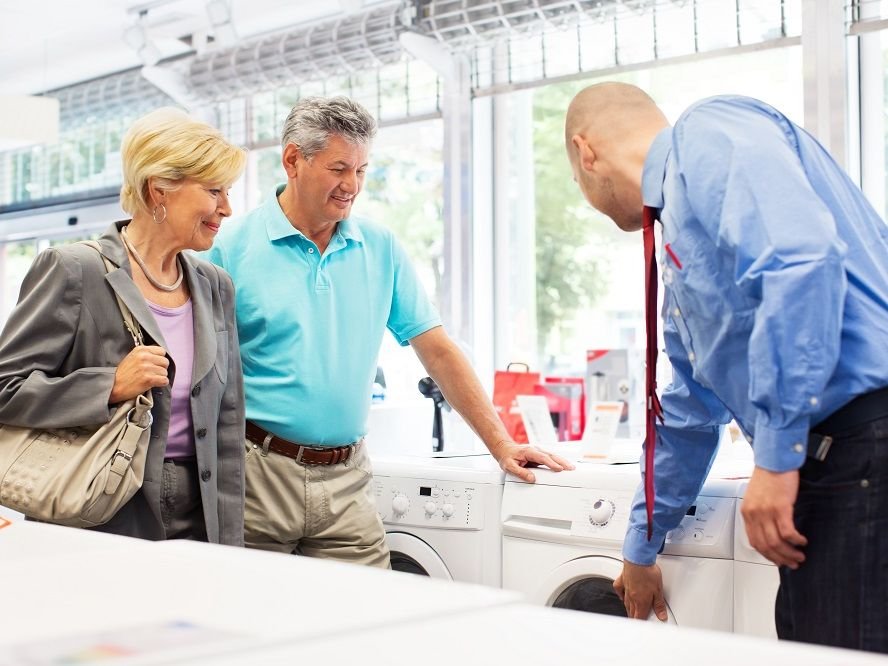Should you use Buy Now Pay Later services to replace appliances?
It’s a universal experience that we are all familiar with: major household appliances unexpectedly breaking while you don’t have the money to buy a replacement outright. You can never really plan for when you’re going to need to buy a new one.

Thankfully, in Australia, we have some robust consumer laws that protect our new purchases for a couple of years. And we all have a pretty good understanding of how long major appliances should last. But that doesn’t stop us from getting flat-footed when we’re unexpectedly faced with having to buy a new fridge or other essential appliances.
For most of us, when the time comes to unexpectedly buy that replacement washing machine, fridge, freezer, television, or other major appliance we can’t live without, the solution has been to rely on a credit card for the purchase. In recent years, however, more and more of us have been using ‘Buy Now, Pay Later’ (BNPL) retail credit options like AfterPay, Humm, and Zip.
Are we ultimately just swapping out one form of credit for another? Is there any benefit to using these new payment options?
Put aside all of the marketing, branding, and technology associated with any of these new payment systems, the basic concept of these payment options is something we have been familiar with for decades as shoppers: it’s another form of lay-by (or layaway, if you prefer that term).
Like lay-by as a concept, the basic idea is to provide consumers with a retail-friendly line of credit to buy something they don’t have the money to pay for. Lay-by, traditionally, has consumers paying off a product bought at a store with regular payments made. The store will keep the product in storage until the final payment is made, at which time the customer can take it home. A deposit is usually placed, with an additional service fee placed on top of the purchase for the customer’s ‘convenience’. The Buy Now, Pay Later (BNPL) services are a little bit different because you can take home the product immediately.
Buy Now, Pay Later services like Afterpay provides the user with immediate gratification. To be fair to these services, if used properly by customers, there are no additional charges. Whereas, Big W for example, charges its lay-by customers a $15 service fee, Afterpay doesn’t charge anything like that. Customers have six weeks to pay off a purchase, and as long as no payments are missed, the dollar figure paid never exceeds the original sticker price. Whereas Afterpay makes its money by charging retailers who want to make Afterpay available to their customers. And through late fees.
Afterpay doesn’t charge its customers interest, but if a payment is missed, late fees are charged. These fees start at $10 and never exceed more than 25% of the original order, or $68 – whichever is less. New customers begin with a $600 limit. The limit is increased the more you spend with Afterpay (i.e. establishing your creditworthiness).
As an interesting aside, Afterpay is an Australian financial technology company. It was founded in 2014 and has since expanded services to the UK, Canada, New Zealand, and the US. Last year the company was purchased by Block Inc, the US company best known for operating the payment service Square. The deal was valued at AUS$39 billion, which speaks volumes about the profitability of a company like this.
Like with any line of credit, it is important to know that you can pay the money back. Buy Now, Pay Later is no different than using your credit card – if you fail to make payments, you can quickly find your debt spirals out of control.
Can you meet the terms of an agreement? If Afterpay wants you to pay back the full amount in six weeks without you incurring a financial penalty, you need to consider whether that is a realistic timeframe for you to pay them back. Maybe a traditional credit card is a better option for you, giving you longer to pay for that fridge that stopped working throughout the night.
It’s worth considering that the rise of BNPL services has been popular initially with millennials (i.e. people under the age of 40) who are more likely to be buying less-expensive items. Consequentially, the regular repayments are relatively small versus, say, the price of replacing a fridge. Yes, you can buy a fridge using a BNPL service, but as you frantically consider your payment options (that food in the fridge is just a few hours away from spoiling), it may be worth also considering where the strengths and weaknesses are of an ever-increasing range of credit options available to you.







